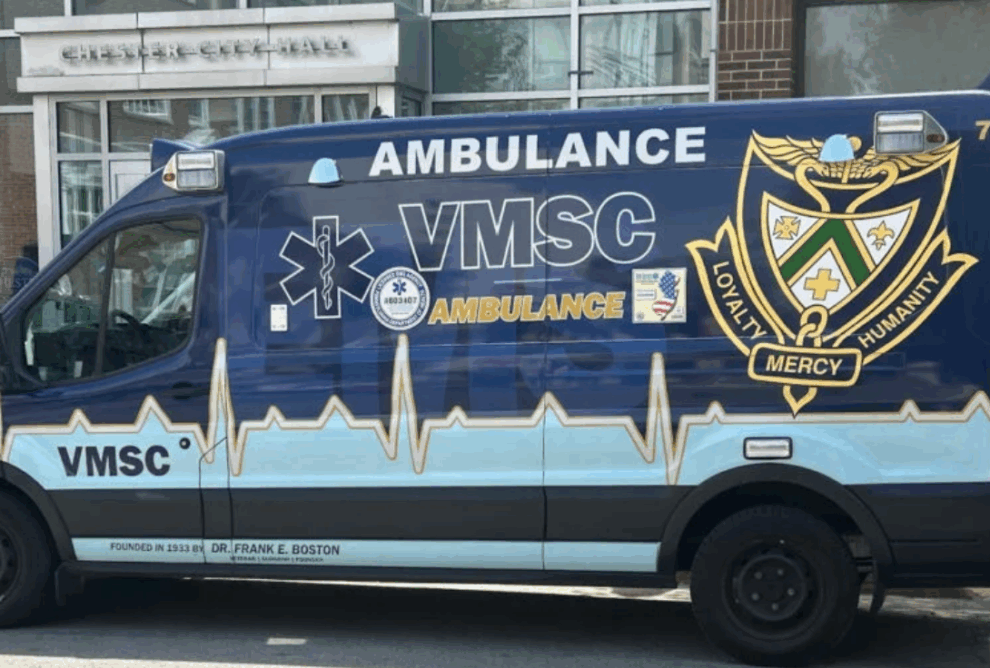The shutdown of Crozer Health means challenges for patients seeking medical care.
Delaware County EMS data shows ambulance rides are three times longer than they were in 2018 for residents needing quick transportation to a hospital.
This problem, spurred on by the closure of Crozer Health and its four hospitals, means patients are left with fewer options when it comes to urgent medical care and emergency services.
Delaware County has the second-densest county population in the Commonwealth. It also has residents experiencing poor health outcomes associated with asthma and cancer, as well as the highest infant mortality rate in the state.
The absence of Crozer Health’s ambulances and hospitals has resulted in a lack of patient care felt by residents across the entire county.
Nearby emergency medical service fleets have stepped up to transport people to the nearest emergency room, but the loss of several hospitals means longer wait times and less room to treat patients in need of medical care.
Jim McCans, Haverford Township’s director of emergency services, said the system is “being held together with vines and coconut shells.”
Crozer Health’s ambulance fleet formerly served more than half of Delaware County.
Its four-hospital system was closed between 2022 and this year, with California-based owner Prospect Medical Holdings declaring bankruptcy.
The closure of Crozer-Chester Medical Center brought the closure of the county’s only designated trauma center. Neither of the remaining hospitals, Riddle Hospital in Media and Mercy Fitzgerald Hospital in Darby, are designated trauma centers.
With fewer hospitals, Landsdale-based VMSC stepped up to provide ambulance rides to patients in need of emergency transport. They hired 42 former Crozer paramedics and emergency medical technicians to meet the needs of the community. Paramedic Kate Denney was one of those hires.
In a recent interview, Denney said the closure of the Crozer Health system has negatively impacted emergency care. “What bothers me is that we do not have hospitals within our area [with] reasonable means to care,” she said.
In 2018, data shows the average ambulance response time to be 7 minutes. This response time has steadily risen to 11 minutes this year.
“A lot of the community, they want to delay their health care because of the situation. They don’t want to come to the hospitals because of the wait time. So, I need to make sure to assure them that it’s important that they do go because waiting or delaying can be detrimental to them,” Denney said.
Denney says the long transport times have sometimes led to fatal consequences for patients.
“There was a gunshot victim who bled out being transported to the nearest hospital and unfortunately, he did not survive. So, time is of the essence,” she said.
EMTs and paramedics strategically choose which hospital to take patients to depending on how full the emergency room is at either of the remaining hospitals in the county.
The average turnaround time for emergency response teams arriving at the hospital with a patient, to transferring care to the hospital, to the ride back to the station was just 24 minutes in 2028. With the strain of resources, this turnaround time has soared to 55 minutes this year.
Neighboring hospitals are doing the best they can to help the community.
A statement from Main Line Health said, “We have taken steps that have ensured that all patients continue to receive high-quality, equitable care. Unfortunately, wait times have been affected by our unprecedented 50% increase in Emergency Department volume. We continue to evaluate and streamline processes to move patients through more quickly. We have also used more of our own staff and hired a number of clinical and non-clinical staff from Crozer to help address the situation.”
Marlow Levy, president of Mercy Fitzgerald and Saint Francis Hospital, said, “In response to the increased demand for emergency department services, Mercy Fitzgerald Hospital has committed additional clinicians, nursing staff and ancillary personnel to ensure we can continue delivering safe, high-quality care to all who need it. We’ve also mobilized key resources, such as equipment and supplies, across our hospitals to meet the evolving needs of the community.”





